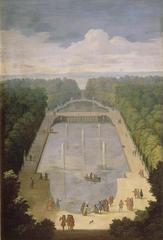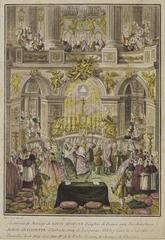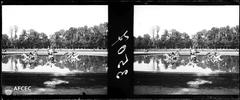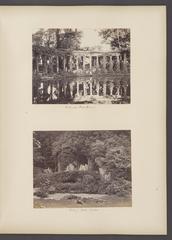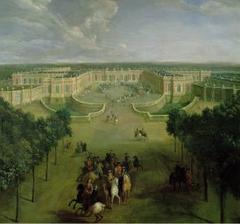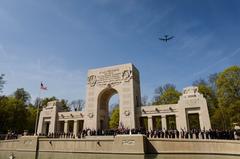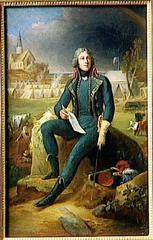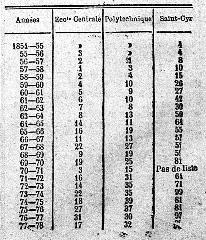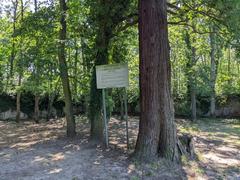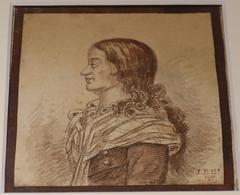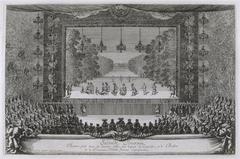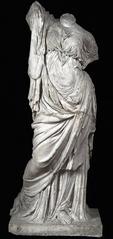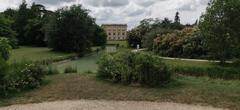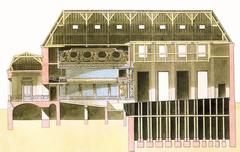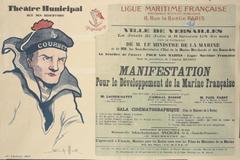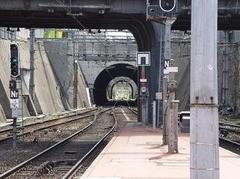
Visiting the Grande Écurie at Versailles, France: Guide, Tickets, Hours, and Tips
Date: 03/07/2025
Introduction: Grande Écurie at Versailles – History and Significance
The Grande Écurie (Great Stables) at the Palace of Versailles is a lasting symbol of French royal heritage, blending architectural splendor, equestrian art, and centuries of history. Commissioned by Louis XIV in the late 17th century and designed by Jules Hardouin-Mansart, the Grande Écurie was much more than a functional stable—it was a powerful statement of royal prestige, playing a vital role in court life and grand ceremonies (Château de Versailles; Wikipedia).
Today, visitors can explore the historic stables, discover the evolution of French equestrian arts, and witness spectacular performances by the Académie Équestre de Versailles. The Grande Écurie is also home to the Musée des Carrosses (Coach Museum), featuring an impressive collection of royal carriages. This guide covers everything you need to plan your visit—including historical context, architectural highlights, visitor information, and practical travel tips—ensuring a rich and memorable experience at this extraordinary Versailles landmark.
Table of Contents
- Introduction & History
- Architectural Grandeur and Layout
- Functions and Daily Life
- Renaissance of Equestrian Arts
- Political & Cultural Significance
- Evolution Through the Centuries
- Visiting Information: Hours, Tickets, Accessibility
- Travel Tips & Nearby Attractions
- Visual Resources & Interactive Tools
- FAQs
- Summary & Final Recommendations
- Sources
Origins and Royal Ambitions
The Grande Écurie stands as a testament to the ambitions of Louis XIV, the Sun King, and the central role of equestrian culture in the French monarchy. Constructed between 1679 and 1682 by Jules Hardouin-Mansart, it was part of a grand vision to transform Versailles into the epicenter of royal power (BBC Travel; Château de Versailles). Alongside its twin, the Petite Écurie, the Grande Écurie formed the Royal Stables, employing around a thousand people at its peak (Wikipedia).
Architectural Grandeur and Layout
Located on the Place d’Armes, directly opposite the Palace, the Grande Écurie’s imposing façade and strategic placement emphasized the importance of horses in court life. The building is arranged around five courtyards, with a central riding arena now used by the Académie Équestre Nationale du Domaine de Versailles (Bienvenue Versailles). Key architectural features include:
- Monumental scale: Designed to house over 2,000 horses.
- Distinctive U-shaped plan: Encloses a grand central courtyard.
- Sculptural ornamentation: Bas-reliefs and motifs celebrating horsemanship.
- Grande Manège: An opulent indoor arena with mirrors, chandeliers, and seating.
The facades are adorned with classical pilasters, arcades, and pediments, while the interiors feature vaulted ceilings, stone columns, and refined details.
Functions and Daily Life
Under the authority of the Grand Squire of France, the Grande Écurie was responsible for the king’s hunting and war horses, training elite riders, and serving as a school for the king’s pages (Wikipedia). The stables bustled with activity—employing squires, coachmen, postilions, blacksmiths, saddlers, musicians, and more.
Beyond its practical role, the stables hosted elaborate carrousels—choreographed spectacles combining music, ballet, and equestrian skill. These events reinforced the king’s image as a patron of the arts and master of courtly ceremony (BBC Travel).
Renaissance of Equestrian Arts
From 1680 to 1830, the Grande Écurie was home to the École de Versailles, a cradle of French horsemanship whose influence shaped equitation, fencing, and ballet across Europe (BBC Travel). The tradition of blending dance, fencing, and riding fostered a uniquely creative environment, attracting nobles from across the continent.
Today, this legacy is continued by the Académie Équestre de Versailles, founded by Bartabas in 2003. The academy’s performances combine haute école riding, dance, fencing, and live music, echoing the multidisciplinary court spectacles of Louis XIV’s era (Sortir à Paris).
Political & Cultural Significance
For the monarchy, the Grande Écurie was more than a stable—it was a stage for projecting royal power. Horses symbolized prestige and military might; equestrian displays were forms of diplomatic currency and political theater (BBC Travel).
The stables also played a role in broader court life, hosting performances and serving as a venue for temporary theaters and grand spectacles.
Evolution Through the Centuries
After the Revolution, the Grande Écurie’s royal emblem was removed, and the building was later used by the army (Wikipedia). In 1913, its facades and gates were classified as historic monuments. Restoration in the 1970s and early 2000s returned it to glory, and it now serves as a vibrant venue for equestrian arts and heritage preservation (Bienvenue Versailles).
The stables also house the Musée des Carrosses, which displays ceremonial coaches, sedan chairs, and harnesses from the royal era (Sortir à Paris).
Visiting Information: Hours, Tickets, Accessibility
Hours
- General opening: Tuesday–Sunday, 10:00 AM–6:00 PM (last entry 5:00 PM). Hours may vary due to special events—always consult the official Château de Versailles website for up-to-date times.
Tickets
- Included in Passport ticket: Grants access to the Grande Écurie, Palace, Gardens, and Trianon Estate.
- Equestrian show tickets: Separate ticketing required for performances by the Académie Équestre; prices range from €16–€35 (chateauversailles.fr).
- Discounts: Available for youth, EU residents (18–25), families, and free for children under 18 and disabled visitors with one companion.
- How to buy: Online in advance is highly recommended, especially during peak seasons.
Accessibility
- The Grande Écurie is partially accessible, with ramps and elevators in most public areas. Some historic sections may be challenging; contact visitor services for details and support.
Travel Tips & Nearby Attractions
- Getting there: Take RER C to Versailles Château Rive Gauche station (10–15 min walk). Paid parking is available but limited.
- Best time to visit: Weekdays or shoulder seasons (spring, autumn) are less crowded.
- Nearby highlights: Palace of Versailles, Gardens, Petit Trianon, Queen’s Hamlet, and the Petite Écurie (Sculptures and Mouldings Gallery).
- Dining and shopping: Cafés and shops are available in the Palace complex and the town of Versailles.
Visual Resources & Interactive Tools
- Explore high-resolution images, 3D tours, and performance videos on the official website.
- The free Château de Versailles app provides audio guides, maps, and interactive resources for the entire estate.
Frequently Asked Questions (FAQ)
Q: What are the Grande Écurie opening hours?
A: Typically Tuesday–Sunday, 10:00 AM–6:00 PM, last entry at 5:00 PM. Confirm on the official website.
Q: Are guided tours and equestrian shows available?
A: Yes, both are offered. Equestrian shows require a separate ticket (chateauversailles.fr).
Q: Is the Grande Écurie accessible for visitors with reduced mobility?
A: Most public areas are accessible. Contact visitor services for specific arrangements.
Q: Are children allowed at shows?
A: Children under 3 are not permitted at equestrian shows; the experience is best for ages 5 and up.
Q: Can I take photographs?
A: Photography is generally allowed, but flash and tripods are prohibited during performances.
Q: Are food and restrooms available?
A: Restrooms are nearby; no cafés inside the Grande Écurie, but there are options in the Palace and town.
Summary & Final Recommendations
The Grande Écurie at Versailles is a multifaceted historical site, offering a rare combination of architectural grandeur, equestrian tradition, and living performance art. From its origins under Louis XIV to its contemporary role as a hub of culture and artistry, the Grande Écurie stands as a testament to France’s royal and artistic legacy. Visitors can enjoy world-class shows, explore the Coach Museum, and discover one of Europe’s finest examples of classical architecture (Wikipedia; BBC Travel; Sortir à Paris).
For a complete experience, plan ahead—book tickets online, check performance schedules, and use digital resources like the Audiala app for enhanced guidance. Combining your visit with other Versailles landmarks will provide a deeper understanding of French royal history and culture.
Call to Action
Ready to experience the splendor of the Grande Écurie?
- Book your tickets and check current schedules on the official Château de Versailles website.
- Download the Audiala app for audio guides and the latest visitor tips.
- Follow us on social media for updates, events, and exclusive content to help plan your perfect Versailles adventure.
Further Reading and Official Sources
- BBC Travel: A hidden side to royal Versailles
- Château de Versailles: Grande Écurie
- Wikipedia: Grande Écurie
- Sortir à Paris: The historic equestrian show at the Grandes Écuries de Versailles





